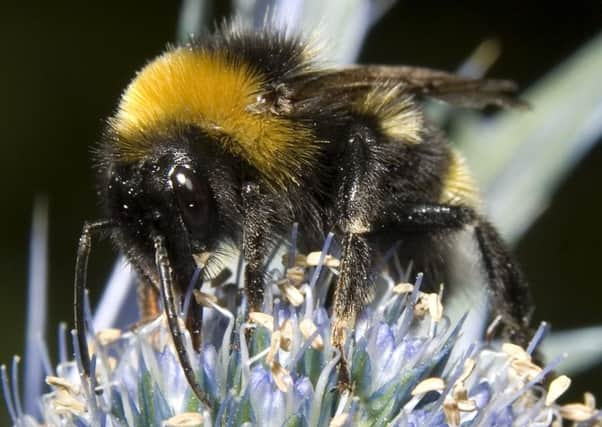Oldest ever eye discovered in fossil by Edinburgh scientists


The remains of the extinct sea creature include an early form of the eye seen in many of today’s animals, including bees, crabs and dragonflies.
A team of scientists that included a researcher from the University of Edinburgh made the find while examining the well-preserved fossil of a hard-shelled species called a trilobite.
Advertisement
Hide AdAdvertisement
Hide AdThese ancestors of spiders and crabs lived in coastal waters during the Palaeozoic era, between 541 and 251 million years ago.
They found the ancient creature had a primitive form of compound eye - an optical organ that consists of arrays of tiny visual cells, called ommatidia, similar to those of present day bees.
The team said their findings suggested compound eyes have changed little over 500 million years.
Professor Euan Clarkson, of the University of Edinburgh’s School of GeoSciences, said: “This exceptional fossil shows us how early animals saw the world around them hundreds of millions of years ago.
“Remarkably, it also reveals that the structure and function of compound eyes has barely changed in half a billion years.”
The right eye of the fossil, which was unearthed in Estonia, was partly worn away, giving researchers a clear view inside the organ.
This revealed details of the eye’s structure and function, and how it differs from modern compound eyes.
The species had poor vision compared with many animals today, but it could identify predators and obstacles in its path.
Advertisement
Hide AdAdvertisement
Hide AdThe eye consists of about 100 ommatidia, which are situated relatively far apart compared to contemporary compounds eyes, the team said.
Unlike modern compound eyes, the fossil’s eye does not have a lens.
This is likely because the primitive species, called Schmidtiellus reetae, lacked parts of the shell needed for lens formation.
Professor Brigitte Schoenemann, from the University of Cologne who was involved in the study, said: “This may be the earliest example of an eye that it is possible to find.
“Older specimens in sediment layers below this fossil contain only traces of the original animals, which were too soft to be fossilised and have disintegrated over time.”
The team also revealed that only a few million years later, improved compound eyes with higher resolution developed in another trilobite species from the present-day Baltic region.
The study is published in the journal Proceedings of the National Academy of Sciences.
It was carried out in collaboration with the University of Cologne and Tallinn University of Technology in Estonia.
